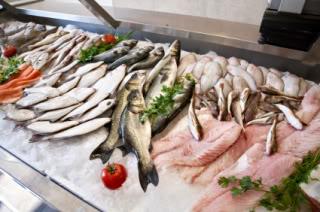Improving Food Security and Nutrition Through Fisheries and Aquaculture
Published on 24 April 2014 in Food, health and wellbeing

Introduction
Scotland’s population is less than 10% of the UK population but lands over 60% of the total fisheries’ catch and produces 80% - 90% of aquaculture products in the UK. Despite its substantial contribution to our food industry, the production and supply of cereals and other staple food commodities have dominated the debate on food security and nutrition.
Fisheries’ and aquaculture’s contribution to food security and nutrition can be enhanced in spite of the challenges that both sectors are facing in terms of their environmental sustainability and the economic and demographic changes that they have to respond to. The importance of this industry to the food security and nutrition debate is heightened by the fact that Scotland has the lowest per capita fish consumption amongst the nations of the UK.
Key Points
- The fisheries and aquaculture sector is a very important industry in many remote regional economies, such as North East Scotland and the Highlands and Islands, where the contribution to local GDP could be substantially higher than the national figure of 1%. When the effects of the processing sector are taken into account, they form significant sources of employment and wealth in these regions.
- The mismanagement of the previous Common Fisheries Policy (CFP) caused many problems over the years in a sector already struggling to adapt to changing market demands, depleting stock and declining profitability. A new CFP came into force on January 1, 2014 with the following overarching goals to restore fishing to sustainable level: Put an end to wasteful fish discards, decentralise fisheries’ management decision making to member countries and prioritise aquaculture.
- The strategic policy challenge is to improve this sector’s contributions to food security and nutrition while also addressing the need for the sustainability of over-exploited and overcapitalised capture fisheries, and improve environmental performance and animal welfare credentials of a growing aquaculture sector.
- Significant changes have taken place in the structure of the UK seafood industry since the late 1980s. On the supply-side the changes are attributable to the reductions in catching opportunities associated with stock depletion in wild fisheries. From the demand side, changes may be due to increasing importance of foreign markets for UK seafood as against domestic markets.
- There is a growing concern held by most of the stakeholders who govern this sector about the growing influence of supermarkets on the supplies and demand for fish products. For example, competition between the supermarket sector and independent retailers has intensified, leading to a reduction in traditional outlets (e.g. fishmongers, retail vans) and the dominance of multiple retailers.
- Thus, the fisheries and aquaculture sectors appear vulnerable due mainly from inequities between producers and buyers, with the latter much the stronger power player. The potential for fish to contribute to food security and nutrition depends, in part, on the health of the domestic production capacity and efficiency of the marketing chain to ensuring the seamless movement of food from where it is produced to where it is consumed.
Research Undertaken
The information in this briefing is derived from a study of the market structure of the aquaculture industry and the review of literature for research carried out as part of the Efficient and Resilient Supply Chains for Food theme of the Scottish Government Strategic Research Programme. The aim of this strand of research is to assess the efficiency and sustainability of the food supply chain and food security in Scotland.
Policy Implications
The implementation of the new CFP regulation to restore fish to sustainable levels means a restructuring of the national fishing industry and loss of jobs in remote regions dependent on the sector. Therefore, policy makers need to consider aiding fishing communities economically and socially to adapt to the change.
Fisheries and aquaculture products are sources rich in high-quality protein and other vital minerals that can play a significant role in improving nutrition and food security. Furthermore, the production techniques employed in fisheries and aquaculture products result in fewer greenhouse gas emissions than other sources of protein such as terrestrial livestock production. Therefore policy makers need to consider how to increase fish consumed in Scotland which will benefit our emissions, national food security and the nation’s health.
Identifying the types and sources of inequalities along the marketing chain should also be a priority, so we can ensure a stable supply. Additionally, the identification of supply and demand constraints and efficient distribution of fisheries products will aid policymakers’ insights into the nature of food insecurity and how policies and programmes could be designed to mitigate them.
Author
Abdulai Fofana Abdulai.Fofana@sruc.ac.uk





